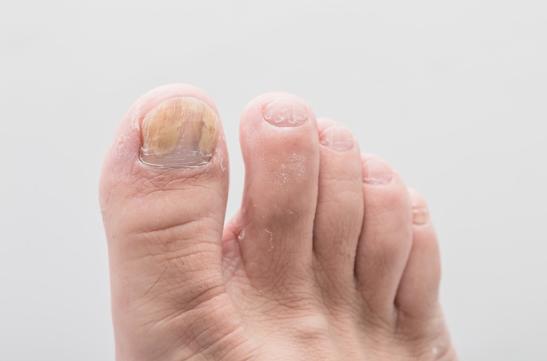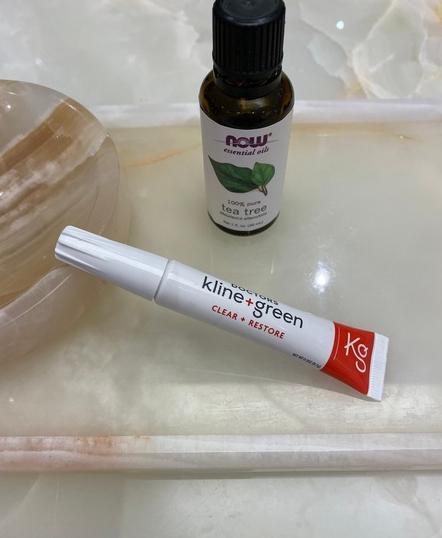How To Prevent Toenail Fungus
No one wants to experience toenail fungus (also called onychomycosis). However, it is relatively...
Let's take a look at both foot problems
With plenty of health information available concerning athlete’s foot and toenail fungus, questions always need to be answered about the nature of these health problems, the antifungal treatment agents available, and how to make the choice between prescribed oral medications and over-the-counter home remedies. Like tires on a car, your feet hit the ground first – and foot health is vital to overall good health. Athlete’s foot (tinea pedis) and toenail fungus (onychomycosis) are two conditions familiar to most. A doctor, podiatrist (DPM), or dermatologist can diagnose the severity of your fungal infection and prescribe a course of treatment. If the infection isn’t severe, you may want to use a natural or home remedy. But remember, these fungal infections can be stubborn and they often recur, so cultivating good foot health habits is essential. The American Podiatric Medical Association reminds us that these fungal infections, left untreated, can cause enough pain to impair our ability to work or even walk.

Athlete’s foot describes a fungal infection of the skin of your feet and the areas between your toes. Toenail fungus can develop from the athlete’s foot fungus and then spread from one nail to another. Unlike athlete’s foot, which spreads easily, toenail fungal infection is rarely passed from one person to another. But, if you’ve had athlete’s foot in the past, you’re more susceptible to toenail fungus and athletes nail.
Athlete’s foot and jock itch are caused by the same fungus (tinea) and present similar scaly patches. Athlete’s foot (tinea pedis) may spread to the groin area and become jock itch, or the other way around.
Most athlete’s foot and jock itch infections are caused by fungi called dermatophytes, which also cause ringworm. These fungi prefer a contained, warm, moist environment and feed on keratin, a protein found in hair, nails, and skin. Notoriously contagious, athlete’s foot spreads through direct contact and through skin particles shed in shoes and on towels, bedding, socks, and floors, particularly in shower rooms or saunas.
Walking barefoot in swimming pool areas and locker rooms may increase your chances of contracting athlete’s foot, so a pair of shower shoes or flip-flops is a good idea for optimal foot care. You may also be at higher risk of picking up this fungal infection if your immune system is impaired or if you have on open cut or sore on your feet.
Cellulitis is a serious bacterial skin infection that can be caused by a case of athlete’s foot. A painful swelling in the lower leg, this contagious condition, if left untreated, can enter the bloodstream and become life-threatening.
* Itchy and scaly rash between the toes
* Red blisters on the soles of the feet or between the toes
* Dry, scaly skin on the soles of the feet and sides of the foot
* Red sores that leak fluid and smell bad
See your doctor if any of these symptoms spread to hands or groin, cause foot pain, appear infected, if you have diabetes, or if home remedies have failed.
Fungal nail infections, notably toenail fungus, or onychomycosis, are most commonly caused by a type of fungus called dermatophyte, but yeast and molds also can cause skin and foot infections, as well as ringworm.
While nail fungal infections can develop at any age, they occur most commonly in older adults. Toenails in particular are often drier and more brittle among seniors, with cracks that allow fungi to penetrate to the nail bed. Risk factors increase with reduced blood circulation to the feet, slower growing nails, prolonged exposure to fungal spores, a weakened immune system, or if time is spent around swimming pools or communal shower areas, if heavy sweating is a problem, or if diabetes is present. Older adults with toenail fungus are also at increased risk for developing bacterial cellulitis with serious complications or other side effects.
On the bright side, unless the onychomycosis is severe, it shouldn’t discourage you from getting a pedicure. Just be sure to inform the nail salon in advance so they’ll be ready to disinfect tools and equipment used at your appointment. Often, the salon will suggest that you bring your own nail kit with you, including nail clippers, trimming tool, and file. Giving up nail polish and lacquer would be a very good move, because they seal the fungal nail infection into the nail bed and make treatment and healing difficult, if not impossible.
* Discoloration
* Brittle and crumbly nails
* Misshapen and ragged nails
* Build-up of debris under the nail
* Foul smell
See your doctor if home remedies have failed and if the nail has become more discolored or deformed, or if you are diabetic and suspect you may have a toenail fungus.
Oral antifungal agents, such as Sporanox and Lamisil tablets or topical cream (terbinafine), will treat athlete’s foot or a toenail fungal infection, though the tablet form seems to act more thoroughly and quickly (about 6 weeks) than the topical antifungal cream. Jublia (efinaconazole) is another prescription topical liquid targeting toenail fungus. Treatment takes 48 weeks.
Tea tree oil is a popular home remedy that can work well for minor fungal nail infections if applied diligently. Diluted with a carrier oil, tea tree oil high in terpinen, one of its main antiseptic and antifungal properties, has been found to effectively treat toenail fungus. As with all treatments, the time it takes to grow a completely new nail requires patience and application of the oil three to four times per day. Continued application after the infection is eliminated should prevent recurrence of the toenail fungus.

To keep your nails strong, we recommend Clear + Restore, which is available for sale online here.